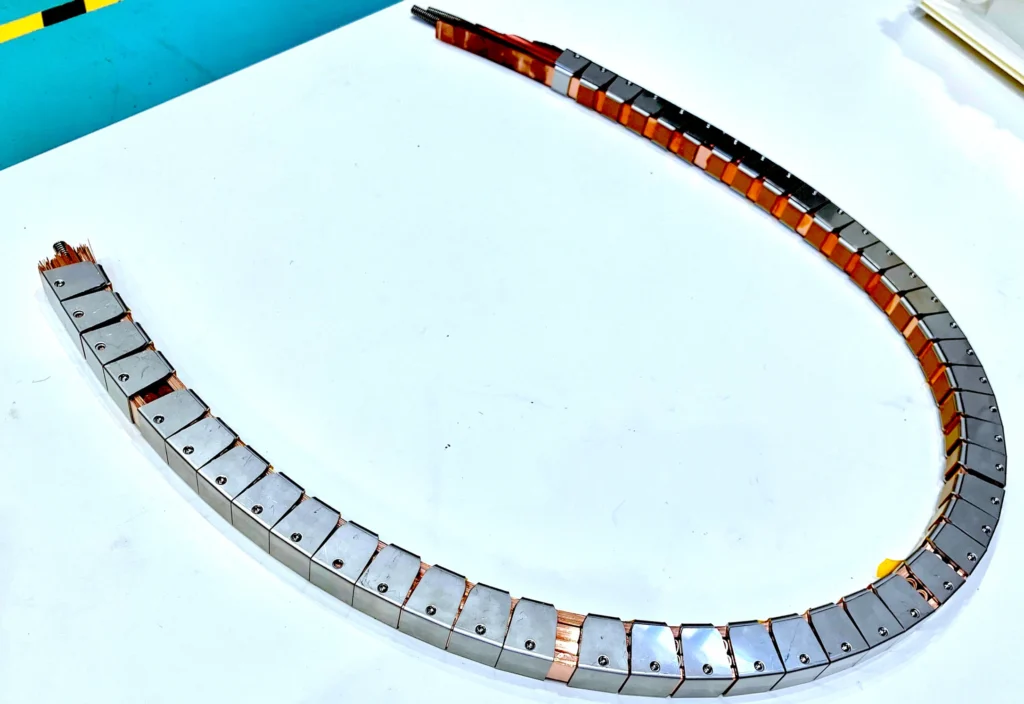Helical Fusion, a Japanese startup specializing in Helical Stellarator fusion power reactors, has successfully completed the world’s first test of a high-temperature superconducting (HTS) coil without electrical insulation. This validation, carried out under conditions simulating the real magnetic environment of a fusion reactor, represents a decisive step in the development of commercial fusion power.
The test, conducted in collaboration with the National Institute for Fusion Science (NIFS), replicated the complex and hostile magnetic environment of a fusion reactor , with intersecting magnetic fields that can damage superconductors. The experiment showed that the coil maintained a stable and super-powerful current (40 kA) under a brutal external magnetic field (7 Tesla, thousands of times stronger than a refrigerator magnet), paving the way for the future integrated demonstration device, Helix HARUKA.
The technology behind the achievement
The high-temperature superconducting (HTS) coil is a super-powerful electromagnet that, when cooled, has no electrical resistance and can create huge magnetic fields with very little energy. The magnetic environment in which this coil was tested included external and self-generated fields, reproducing the complex electromagnetic conditions expected in future commercial fusion reactors.

A clear and ambitious roadmap
This breakthrough is part of the Helix Program, an initiative led by Helical Fusion with the goal of commissioning the world’s first commercially viable fusion power plant in the 2030s. The strategy is articulated in three phases:
- Validation of technologies such as HTS magnets and the integrated blanket/shifter system.
- Construction and operation of the Helix HARUKA demonstration device.
- Start of power generation with the Helix KANATA pilot plant.
The key to the Helical Stellarator model is its ability to operate at steady state, with high energy efficiency and continuous maintainability, three fundamental requirements for fusion power to be viable on an industrial scale.
Public-private partnership with government support
Since its founding in 2021, Helical Fusion has maintained a close collaboration with NIFS, Japan’s leading benchmark in fusion research. In 2024, a joint laboratory was established at the institute to accelerate the development of HTS magnets and power systems.
The project is also supported by the Japanese government’s SBIR Phase 3 program, a grant line managed by the Ministry of Education, Culture, Sports, Science and Technology (MEXT). The company has received ¥2 billion (approximately $13 million), the program’s largest allocation.
A market with a billion-dollar projection
More than 50 fusion projects are currently competing globally, however, the company’s approach with the Helical Stellarator stands out for its ability to meet technical requirements without the need for unproven future technologies.
With the global energy industry seeking clean and stable alternatives, this breakthrough puts Japan at the forefront of the technological race toward a new energy era. Fusion energy, driven by developments such as Helical Fusion, could become one of the economic mainstays of the future.
Source and photo: Helical Fusion

